Five days on and Spiti had been a promised traveler’s delight. These had been days full of explorations, welcoming smiles, giggles, and developing a bond with Spiti. The hospitality of Kaza had taken me over. All you need to do is to break the ice with a smile, say ‘Juley’ (greetings and respect), and engage in a conversation with a local, or best a monk in a monastery. From religion, local lore to culture and history, you can crack up any topic with monks. Kaza is a cultural potpourri for Spiti valley. Every morning village folks from Langza, Mud, Kibber, and Cheecham, come in the morning bus, to do their daily business in Kaza. The same bus leaves in the evening. This is how normal days go. Being close to the bus station, I was witness to these shades, day begins early here and continues till late.
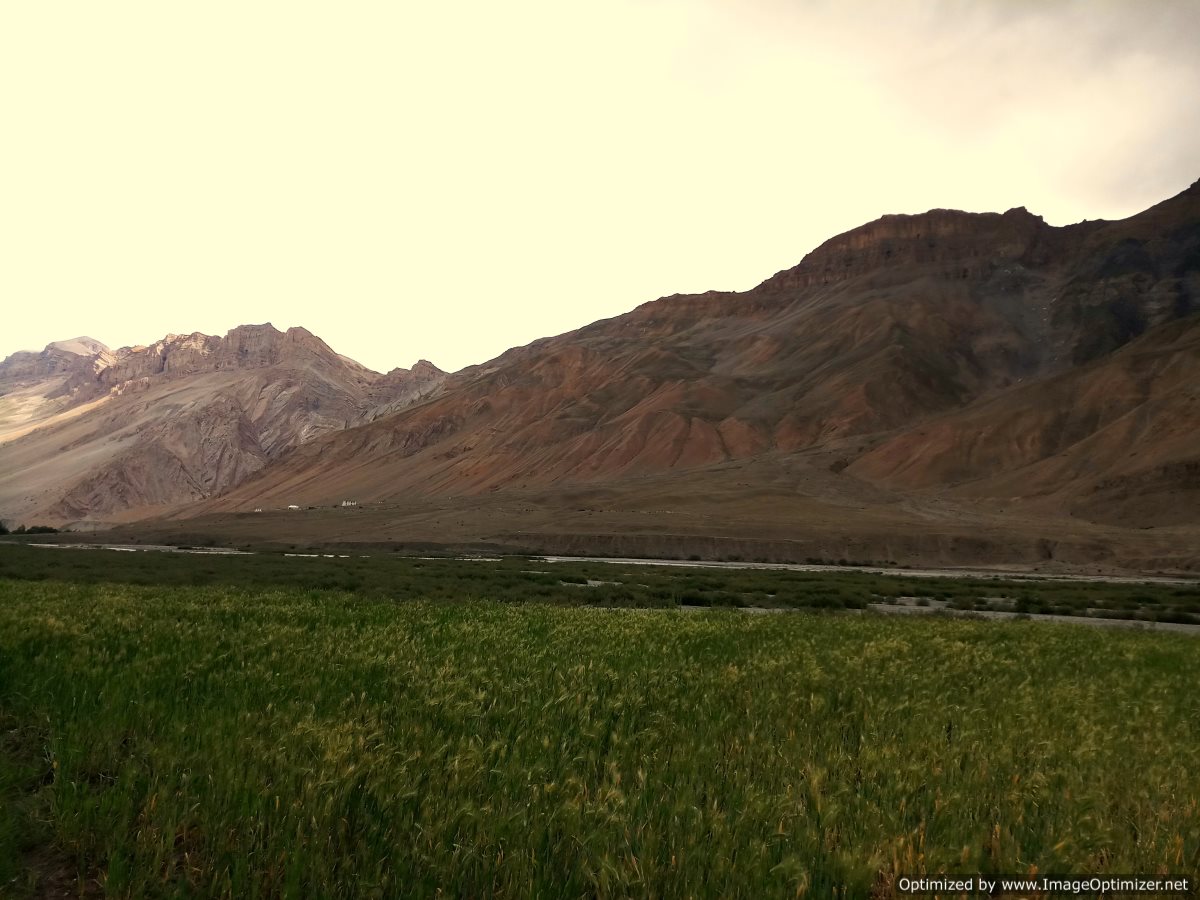
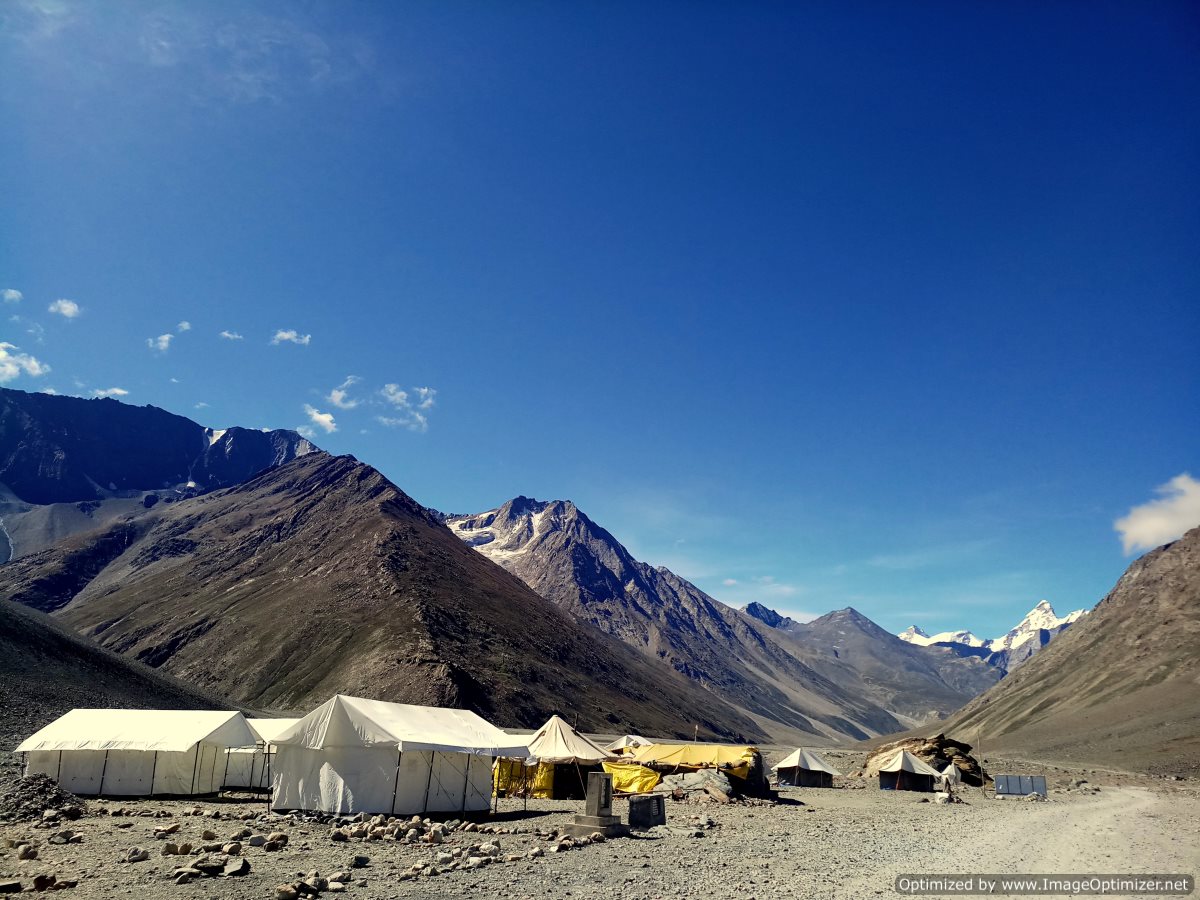
On this day, I had decided to take the route heading towards Langza, the fossil village; Hikkim, with the unique distinction of hosting Himachal Pradesh’s highest polling station as well as the world’s highest post office; and Komic, world’s highest village connected with a motorable road. The journey to the villages is short, but not without its own challenges. Even though, the scenery weans away all pain of the journey, the benign neglect of the development of road infrastructure is hard to ignore. Half the journey is covered on dirt tracks, but in Spiti, there can be no better inspiration to travel than the scenery. I had decided to go to Langza, and then trek from there to Komic and then downhill to Hikkim. The open spaces along the way promise an endless supply of solitude, and the concoction of solitude, serenity, and the feeling of being with oneself lures travelers like nothing else.
Signs of life in Langza
When you drive towards Rangrik from Kaza there comes a bifurcation, one road takes you to Key and Kibber, and the other goes to Langza – Komic – Hikkim. Langza is unique in its own way. Popularly known as the fossil village, Langza is for science buffs looking for signs of early life, and the great geological event of a collision of tectonic plates of India and Eurasia, which gave rise to the mighty Himalayas. The circular rings like fossils are signs of prehistoric marine life, of a time when this land was a sea. Due to tectonic movements, the India plate shifted and thus the Himalayas arose. But even if you aren’t looking for fossils, the mesmerizing scenery at Langza wouldn’t fail to captivate you.
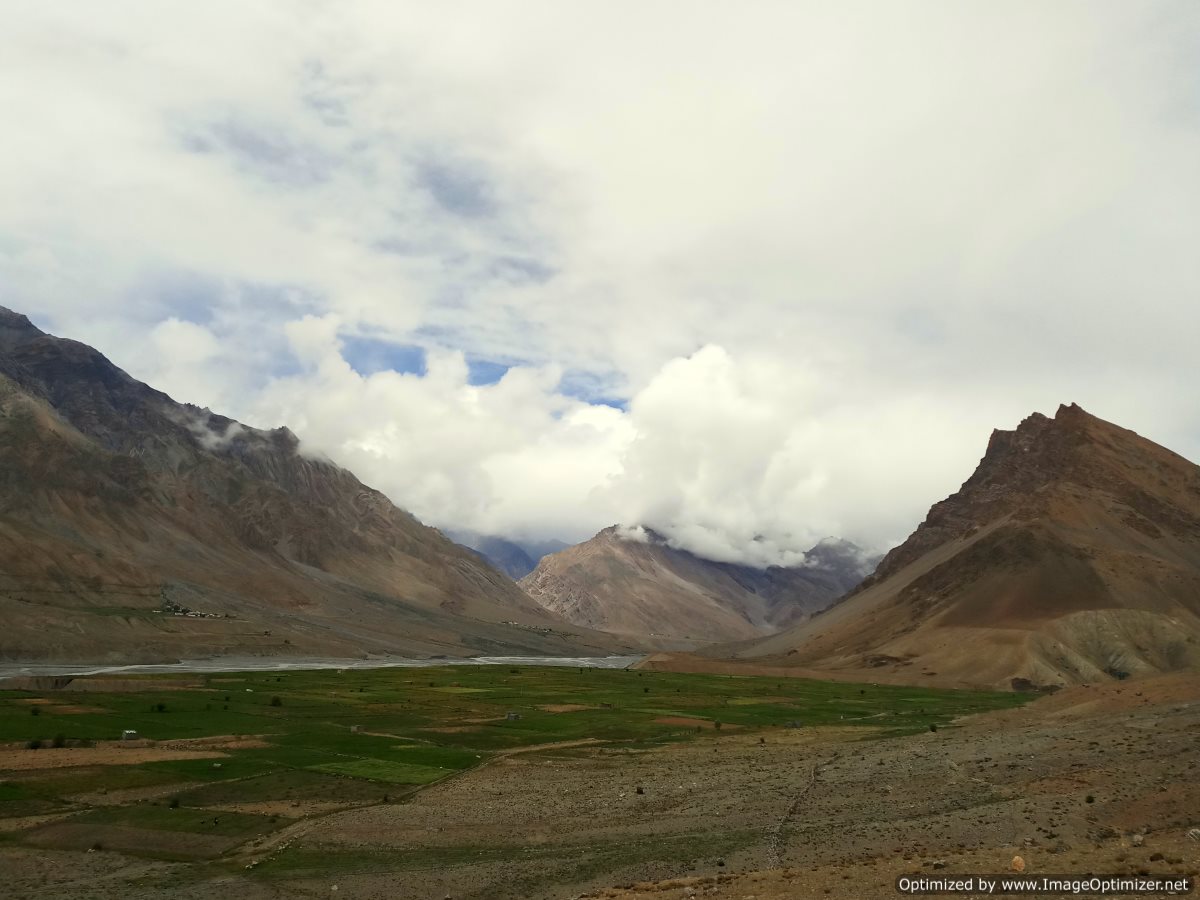
Even before entering the village, the grand Buddha statue overlooking the village captures your attention. The sight of Lord Buddha sitting in the lap of mighty Himalayas all around is a sight to behold. You starting enjoying Langza from the moment you take a steep turn to reach it. The road ascends fast, and from your window, you could watch valley getting deeper, slopes getting steeper and the peaks growing shorter as your altitude begins to match theirs. And then gradually, the peaks turn to flat plateau, absurdly green for the barren brown landscape, that had accompanied all along the journey. The terrain looked like a verdant carpet of green, a piece of heaven, tended by elves, for the gods who would descend here on some bright, starry night. And from the edge of this green carpet, arise a piece of earth, a near flat, vertical wall, with snow-covered crown, dominating everything around. This is the Chau Chau Kang Nilda peak (the literal meaning of the name of this peak is “Blue moon in the sky”).
In the lap of this 6500m peak (highest in Spiti region) peacefully sits the village of Langza, a hamlet of some 50 houses skirted with lush green fields. In such a beatific setting, moments are never rare. Even though I spent nothing more than an hour in the scenic village, I felt a huge calling here.
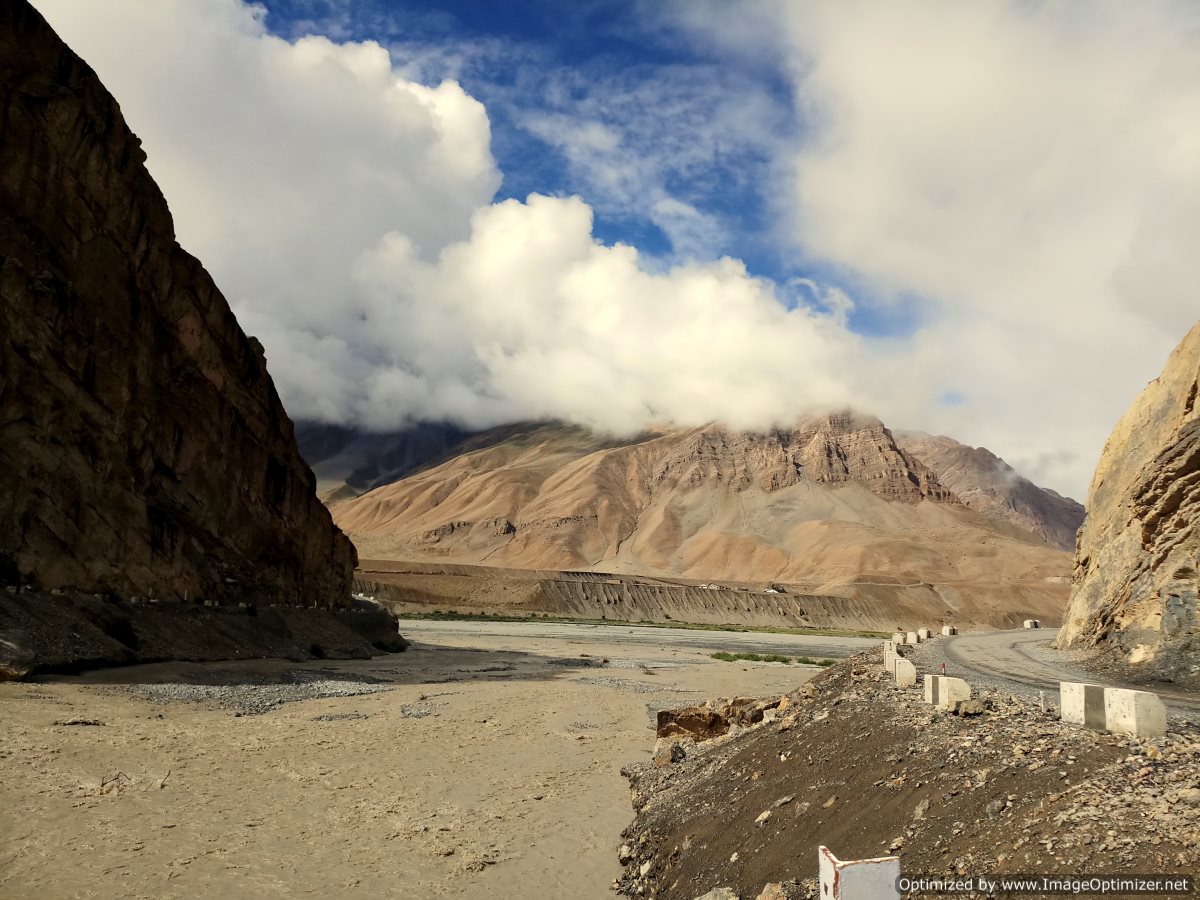
The highest nest, Komic
I made a move from Langza towards the highest motorable village of Komic. A short two-three hours of trek take you to Komic. Alternatively, you can always take the road. Perched at 4500m, it is among the highest inhabited villages in the Himalayas. A board saying, ‘welcome to the highest homestay’ welcomes you to the village. On one side stands the Komic monastery overlooking the lush green fields. Opposite to the monastery is tucked a cute café (ah, world’s highest café) like some fairytale romance. From the monastery, I looked at the village. A total of 10 houses. Upon inquiry, I came to know some 60 people live in the village.
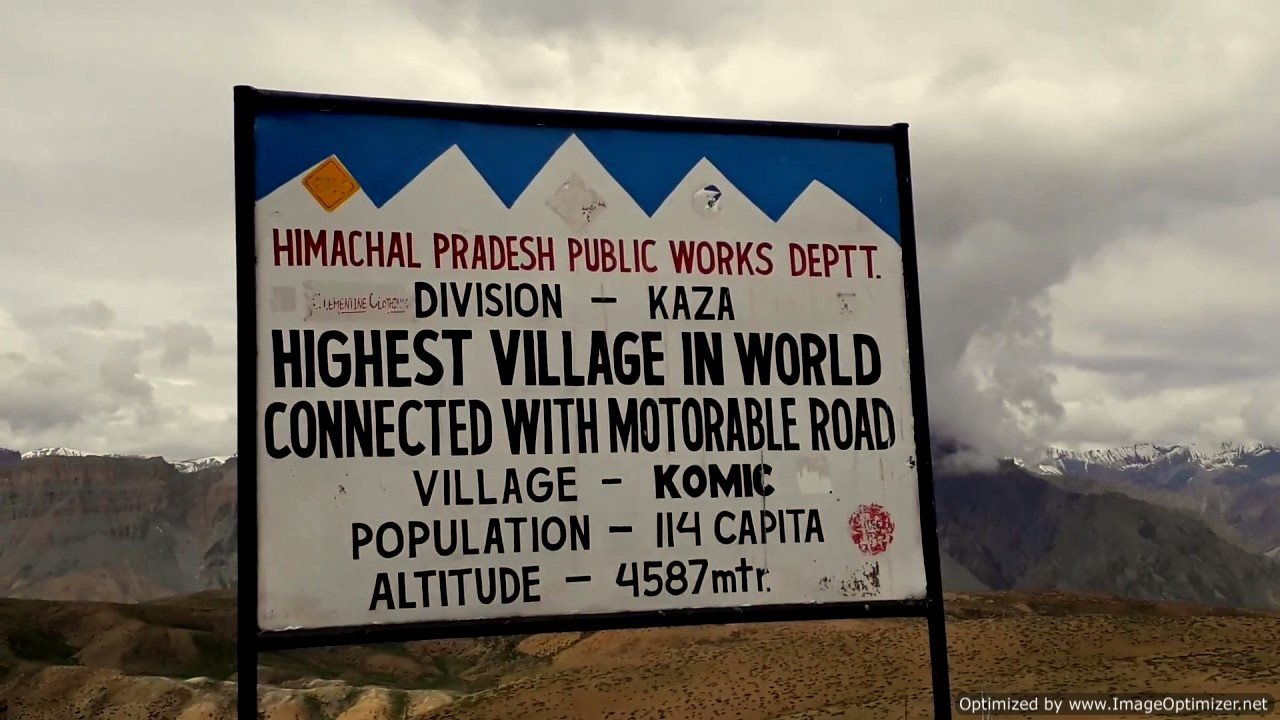
Legend has it that due to a long drought, the monks of Komic decided to shift the monastery to the nearby low lying Hikkim village. But the grand statue of Mahakal couldn’t be moved. The entire monastery was moved, but the statue of Mahakal remained adamant, with all but one monk. In 1975, a massive earthquake struck Spiti which completely destroyed the new monastery set in Hikkim. The monastery at Komic didn’t suffer much damage. Thereafter all the monks returned to the Komic monastery.
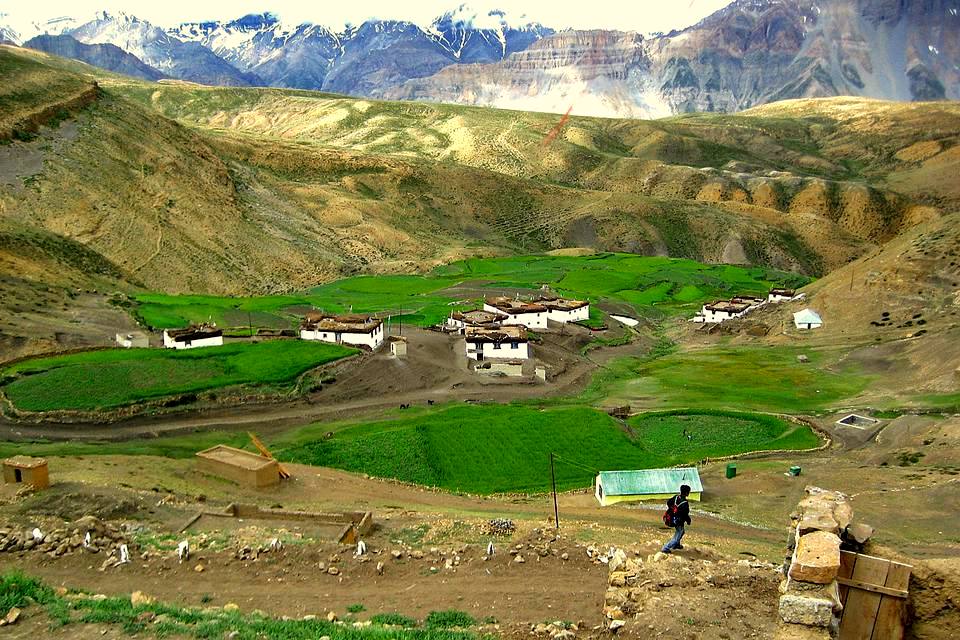
The road from Kaza leading to Komic is a steep winding uphill climb. It is both a seasoned dream and a rookie’s nightmare, as the lack of oxygen and change in weather becomes palpable. First-time travelers need to be cautious, and it is always advisable to keep Komic towards the end of the itinerary. The village is housed in a bowl-shaped depression, distinctly split into two parts, the lower with a small cluster of houses and upper with a cluster of larger houses. A hillock above is housed the Komic monastery, painted in beautiful bright colors.
When in komic, take a detour around, it’s not difficult to find fossil rocks. Pencil in some time to be at the world’s highest café, don’t forget to order Spiti sandwiches. The service is quick, and taste, just like the scenery, beyond expectations.
Though there may not be a huge list of to-do in these villages, their seclusion is enchanting. And a thought on life at these heights and so off the road villages is inspiring. I broke into a small talk with a local, who took me to his mud-house, offered Spiti’s butter tea, and started telling me about life in the village. Summers is the month to work and save, while in winters, one can only be indoors, enjoying the reserves of the summers. Still, winters are something the villagers await for. There could be a surreal, romantic charm in temperatures, dipping below -20 degrees. There should be, and probably a prosaic feeling in the white splendor of snow, one that can only leave us to shudder, but becomes the sole companions of these villagers. I could only smile at the thought, life shapes up in different ways and people have evolved to live in these extremes.
On a postcard pilgrimage to Hikkim
Taking leave from Komic, one can go downhill to Hikkim, the highest post-office. Fortunately, I had got a lift from there to Kaza. Yes, such plans work in Spiti. The walk to Hikkim wasn’t tough, but it went steeply downhill. The Hikkim post office was opened on November 5, 1983, and Rinchen Chhering—has been the branch postmaster here since inception. This conspicuous Spitian landmark is also his home, and in a place with no communication channels, works as the only means to communicate with the other world. It is this place, where monks from Komik monastery receive their letters from other spiritual centers, some as far as Tibet and Bhutan, where farmers open their savings account, and tourists like me send postcards, to hold by as a memory from the Spitian highs.
The journey of the post from here is as interesting as the place itself. Every morning, two runners take turns in delivering mail on foot from Hikkim to Kaza. From Kaza, the emails are taken by bus to Reckong Peo, onward to Shimla, further by train to Kalka, and then loaded on a bus to Delhi, from where it is further distributed. Following the long-held tradition, I too sent myself two postcards from Hikkim. And as I write this piece, I can look at those two tokens of love, sent from the land, every shade of which, leaves you enchanted.
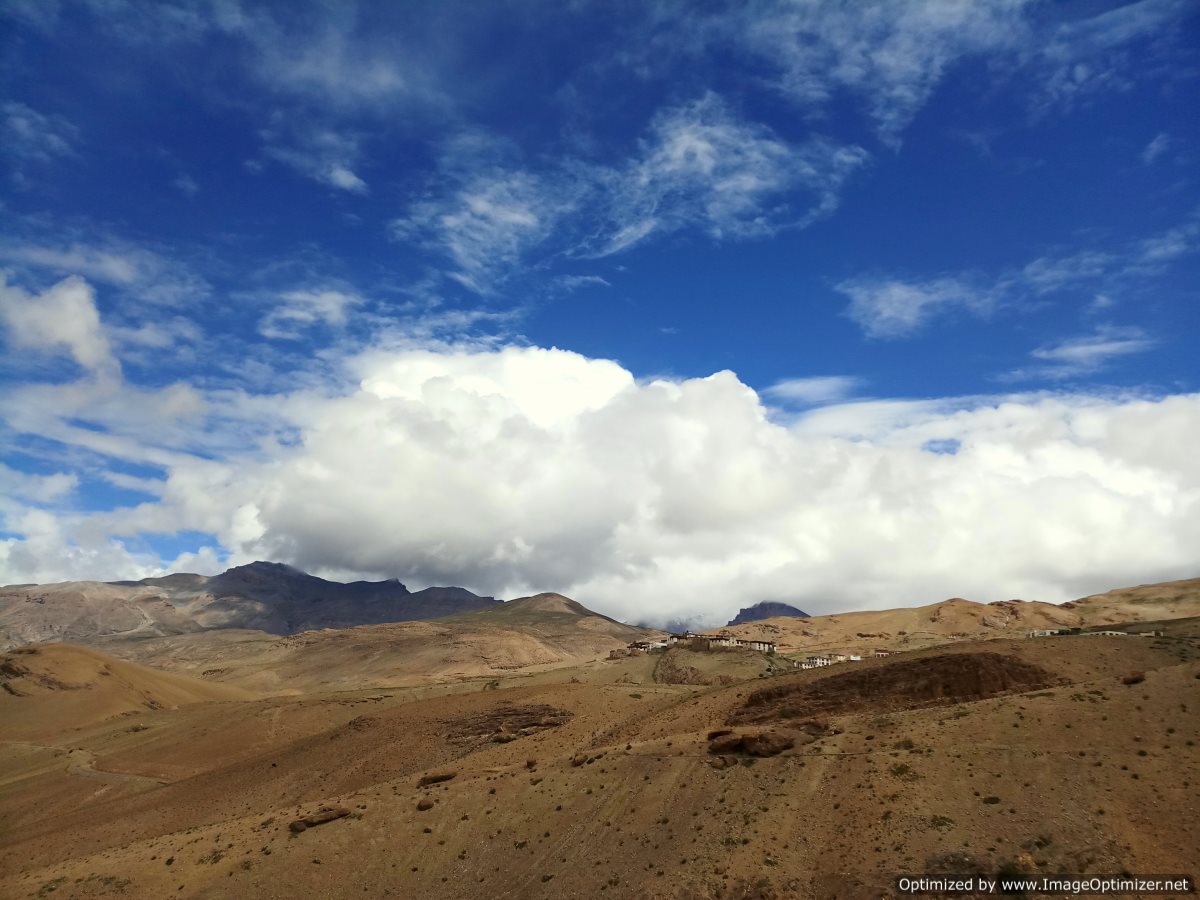
It felt there that the azure blue skies and empty expanse around had joined hands to deliver an inviting feeling of seclusion. There are subtle signs of authenticity and rusticity in life at these heights. The age-old ways of farming, the plain mud and stone houses, painted white on the exteriors and beatifically adorned with colored flags, and a life seemingly frozen in time: simple, and in inviting synergy with the habitat. With every step, I felt myself closer to this land and was unraveling the deeper meanings of life, hidden in the vast barrens of Spiti. And nothing was more loud and clear than living in synergy with nature. I made my way back to Kaza, having grown richer in the philosophy of life, memories, and pictures that would form the décor of my walls to teach me how big and beautiful life is, and how less have I explored it. As we returned, we halted to have a look at the old monastery, destroyed during the earthquake. I searched in the mountains to look at the Komic monastery one more time. A story a time leaves in the midst of a puzzle called faith and belief. Who to believe, and what to take as real? In the land called ‘lands of God’ by Mark Twain, everything seems real. Perhaps its only faith that can make you a part of this vastness.
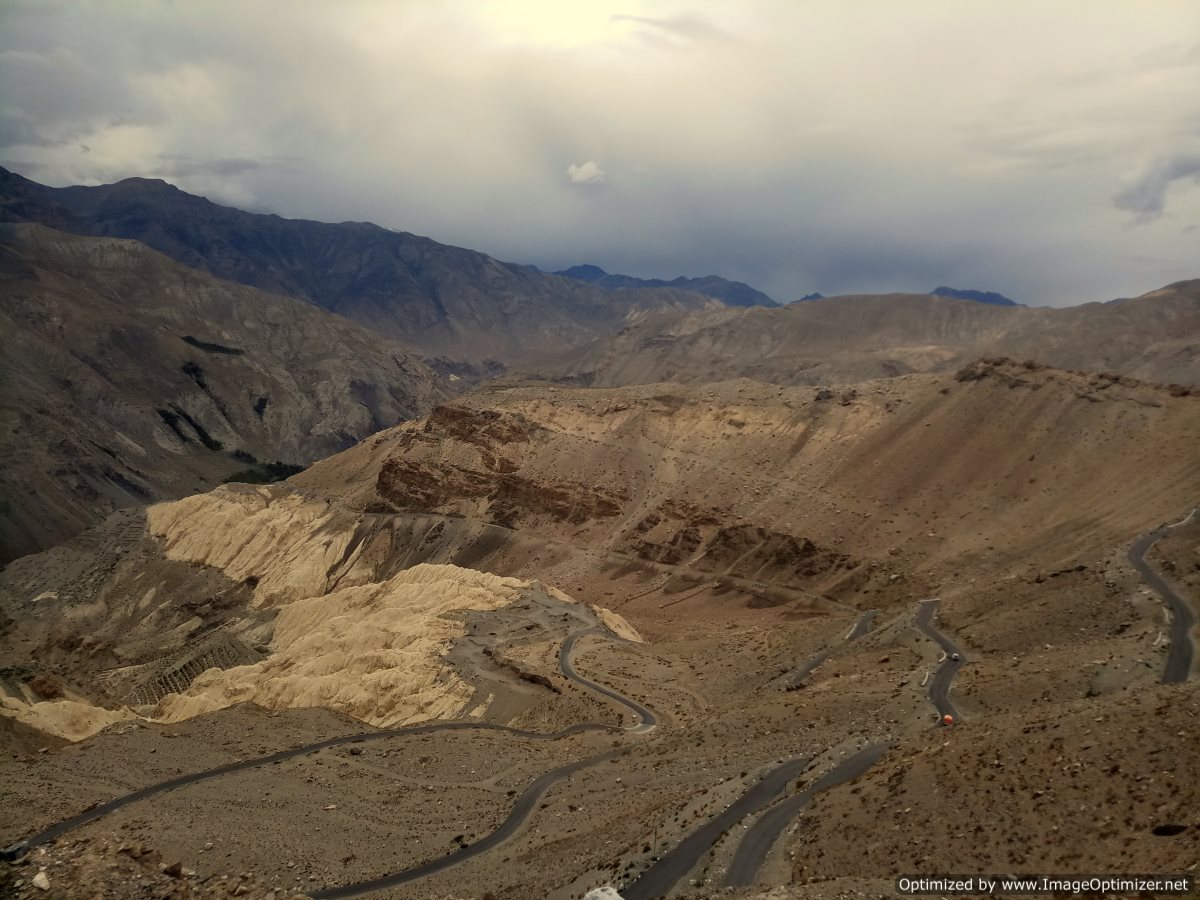
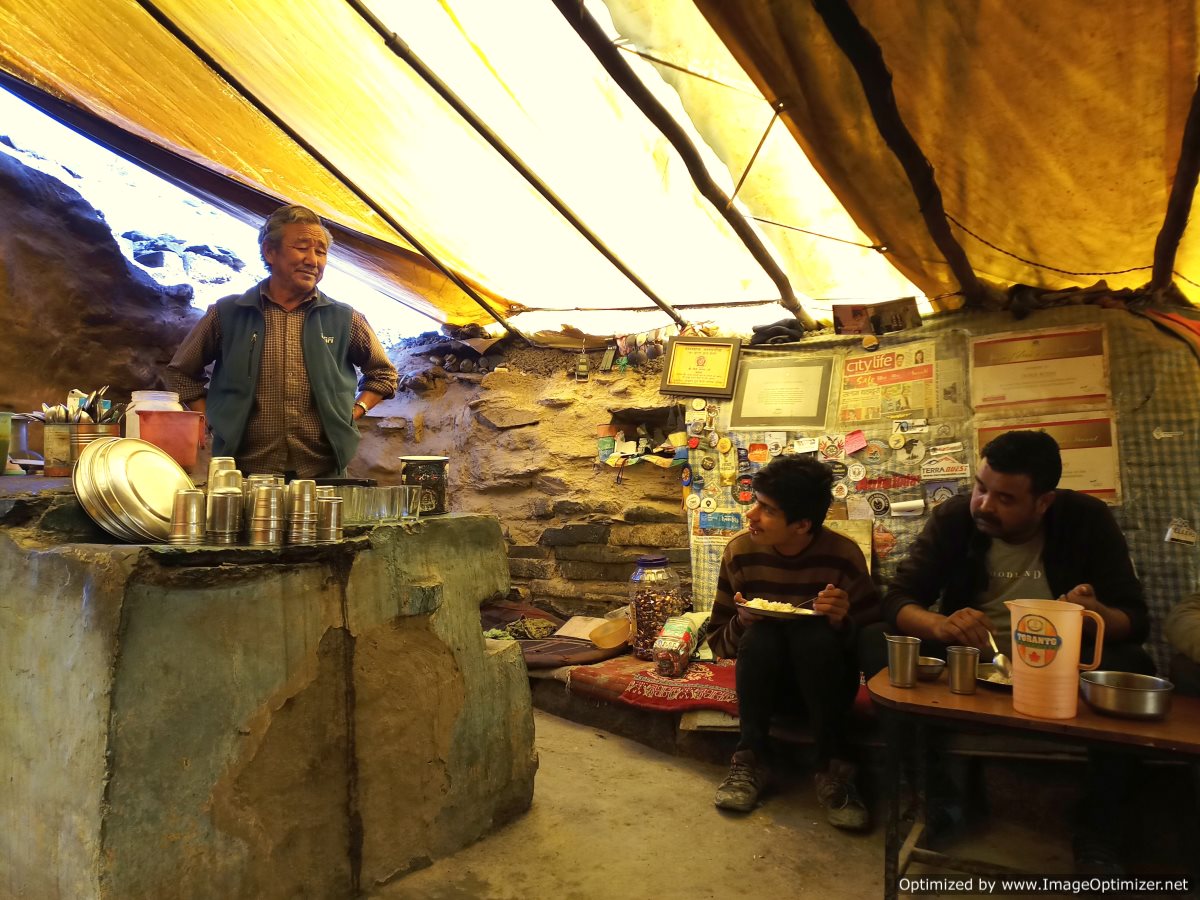
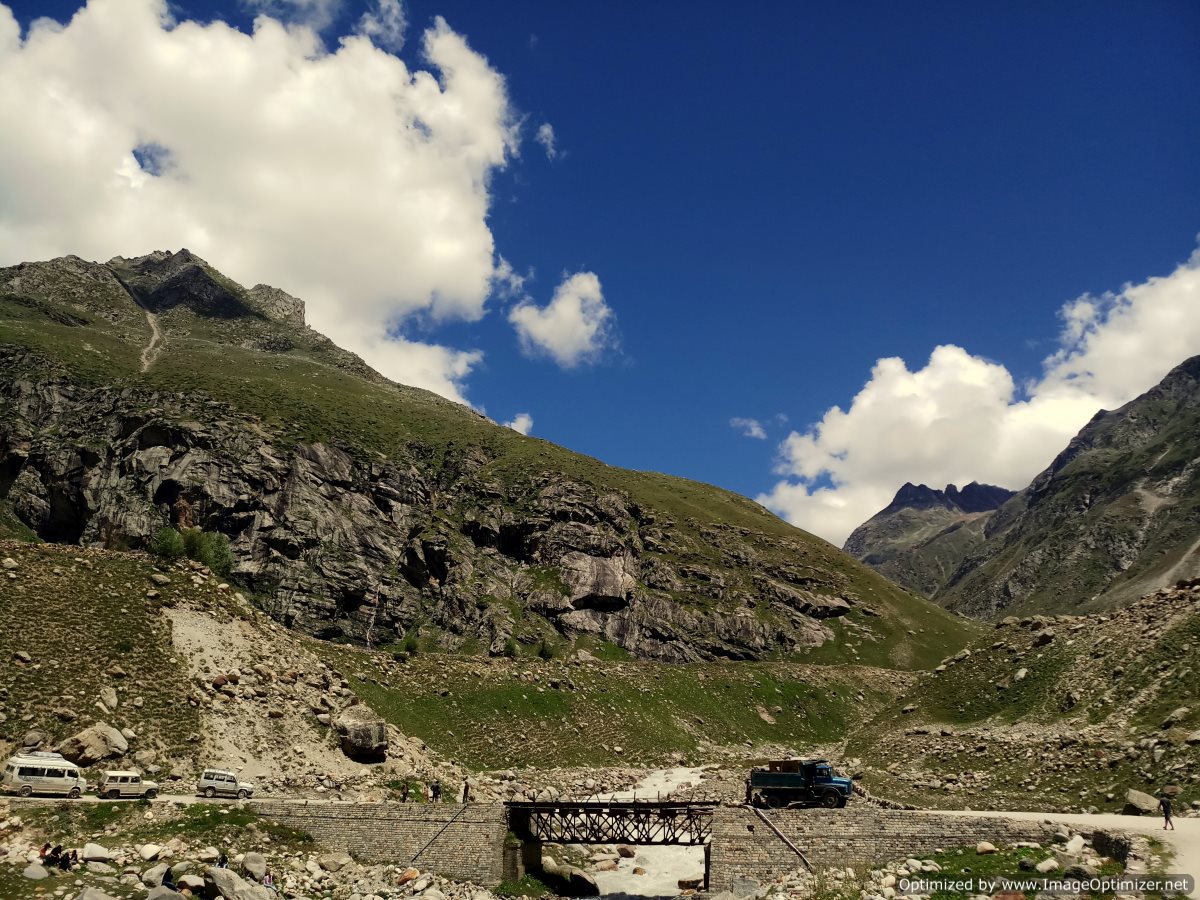
Read more about my Spiti travels: 1) Kalpa and the Kinnaur sojourn 2) Dhankar, the beautiful monastery perched in the highs, 3) Tabo, the oldest monastery, and 4) Key monastery and Kibber village








Hello, such a nice blog. really liked it. Looking forward to read more.
Great to know that you liked it
Thanks a lot for liking the article. And yes I am writing more
Great!
Nice and great pictures. Very well written this post. I really loved reading this blog. Really a fantastic feeling after reading this experiences.
Thanks Spiti is a beautiful place